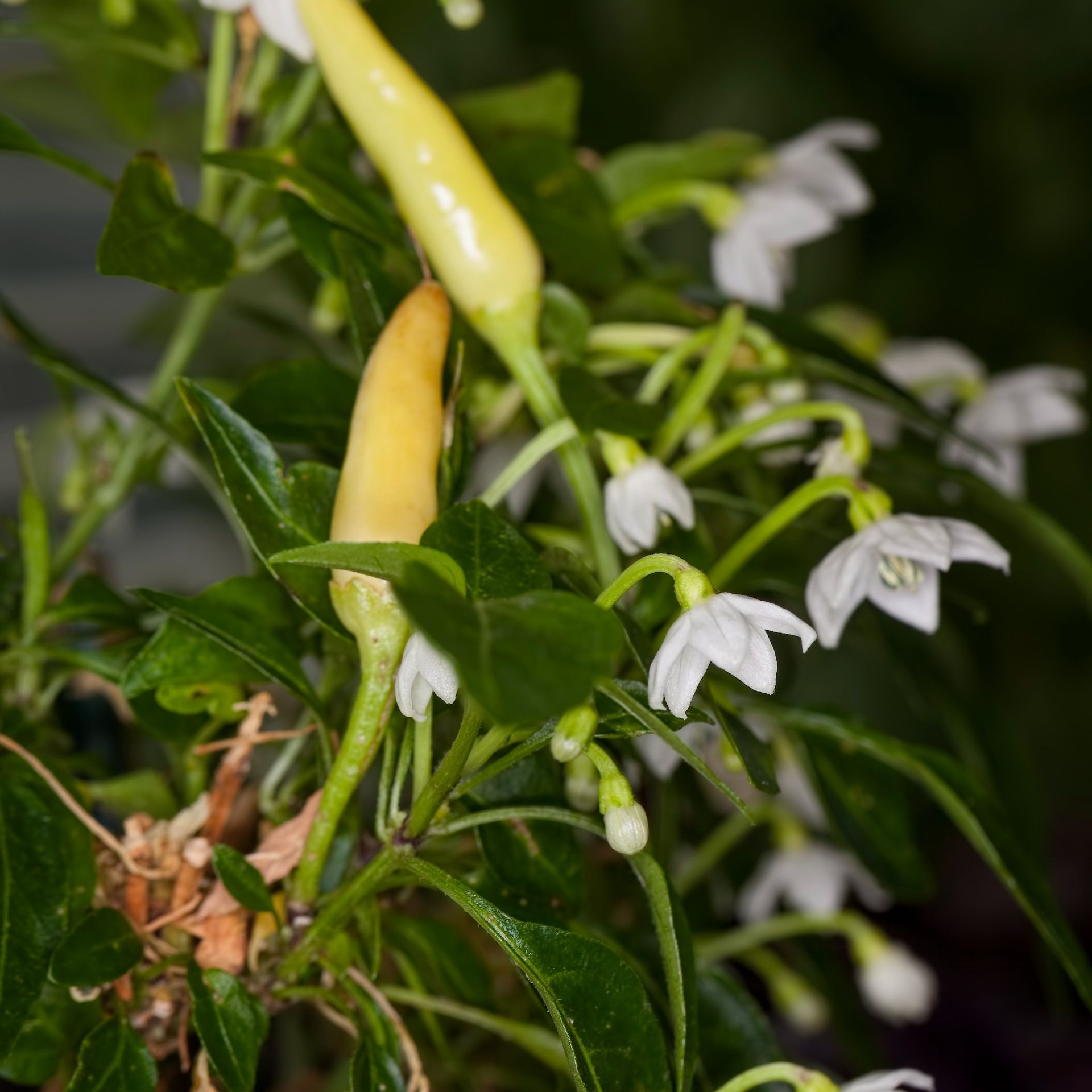Overwintering chilli plants – how to keep your plants alive during winter, according to experts
This is how and when to overwinter chillies for plants bearing an abundance of fruit year after year


Sign up to our newsletter for style and decor inspiration, house makeovers, project advice and more.
Thank you for signing up to Ideal Home. You will receive a verification email shortly.
There was a problem. Please refresh the page and try again.
Chillies are the spice of life. Quite literally. And similarly to the likes of tomatoes or strawberries, they are not difficult to grow yourself, even if it is indoors in pots. But if you do grow them outdoors in your garden, it might soon be time to start overwintering your chilli plants.
What is overwintering, you ask? It simply means ensuring that your plants (any plants) survive the winter cold and doing anything required for the plant in question to get out of the winter months alive.
When it comes to chilli plants, the first rule of overwintering them is to move them indoors, according to gardening pros. That part’s easy. And the rest of the process can be too as long as you follow this expert-approved guide.
Guide to overwintering chilli plants

Unless you’ve mastered the art of how to grow chillies in pots, your chilli plants are currently growing in your garden lots. But they shouldn’t be for much longer as they don’t deal well with cold and frost.
So before it gets to that, start the overwintering transition by bringing your chilli plant indoors.
What you’ll need
- Secateurs like these at Amazon
- Free-draining compost like this at B&Q
- Plant pots like these at Amazon
How to overwinter chilli plants
‘First, you’ll need to dig up any chilli plants that are in the ground and plant them up in pots,’ says Fiona Jenkins, gardening expert at MyJobQuote.co.uk. ‘Make sure they’re in free-draining compost, so they don’t become waterlogged over winter.’
The next piece of garden advice is to give your plant a good prune.
‘Remove around half of the plant structure,’ Fiona continues. ‘This will feel a bit drastic, but it will give your chilli plants the best chance of survival. Remove any stems that are still producing fruit as well as any young stems at the base of the plant.’

‘Then, look for the V-shaped joints on your remaining stems and cut just above these. You need to leave these joints intact as this is where next season’s fruit will grow from. Aim to leave one leaf node above the joint and this should give your chilli a good head start when it begins growing again next spring. Don’t worry if your leaves fall off over the coming weeks, this is entirely normal as your plant is going into hibernation.’
It is possible to keep your chilli plant non-dormant, bearing chillies throughout the winter months if kept in a warm environment. But it is a lot of work involving a lot of upkeep. ‘If the chilli is overwintered in a cool spot, it will not bear any fruit during this time but can save energy for the new season during its winter dormancy,’ explains gardening and plant expert from Fantastic Gardeners, Petar Ivanov.

Peter Ivanov is a gardening and plant expert who has been working at Fantastic Gardeners for 8 years. As one of the company's top-performing experts, he now manages over 6 teams of gardeners, delivering stunning landscape results and fostering a deep connection with nature through his work. With his green thumb, leadership skills, commitment to sustainability and determination to learn, Peter's wish is to leave a lasting mark in the world of gardening.

He continues, ’Place the plants in a cool and bright area. The recommended temperature range is between 10 and 15°C. The light and temperature conditions need to remain consistent throughout winter.’
Once you find the right spot for your plant, there is not much more you need to do with your dormant plant until the spring comes, ‘While they’re dormant they don’t use as much water, so your plants only need a light watering every few weeks. Overwatering can rot the roots, so aim to keep the compost moist but not wet,’ Fiona advises.
When to start overwintering chilli plants

Whether you’re overwintering chillies or lavender in pots, it’s important to get the when right.
‘The majority of chilli plants are unable to tolerate and successfully grow in temperatures under 10°C, so once the outdoor temperature reaches this, it's time to move them indoors,’ Steve Chilton, garden expert at LeisureBench, says. ‘Here in the UK, this can be anytime in October/November, depending on how the season pans out.’
As chilli plants are very sensitive to frost and cold, it’s very important to get them inside before the first frost appears.

Steve is a passionate and knowledgeable garden expert with several years of experience within the field. As the director of LeisureBench, an industry-leading garden furniture company, Steve has developed strong expertise for all things nature and plants.
FAQs
Is it worth overwintering chillies?
Whether it’s worth overwintering your chilli plants to you, you must decide for yourself. But generally, chillies are not seen as annual plants, discarded at the end of the season and replaced with the onset of spring. Chilli plants are traditionally overwintered.
‘Chillis are grown as perennial plants in their native countries, meaning they grow back every year. So, with the right conditions many chilli plants can be kept alive over winter,’ Fiona confirms.
Should I cut back my chilli plant in winter?
Before leaving your chilli plant in its dormant state for the winter, you should give it a good prune.
‘Prune the chilli plants back to remove any excessive growth. This makes it easier to manage them when they're indoors,’ Steve says.
One more thing before you get on with your overwintering duties - if the air becomes too dry during the winter, make sure to mist your chilli plant a little to keep it from dehydrating. Other than that, you’re all set.
Get the Ideal Home Newsletter
Sign up to our newsletter for style and decor inspiration, house makeovers, project advice and more.

Sara Hesikova has been Ideal Home’s News Writer since July 2023, bringing the Ideal Home’s readership breaking news stories from the world of home and interiors. Graduating from London College of Fashion with a bachelor’s degree in fashion journalism in 2016, she got her start in niche fashion and lifestyle magazines like Glass and Alvar as a writer and editor before making the leap into interiors. She feels the two are intrinsically connected - if someone puts an effort into what they wear, they most likely also care about what they surround themselves with.
-
 The White Company is selling the perfect space-saving Christmas tree alternative – it's very Scandi chic
The White Company is selling the perfect space-saving Christmas tree alternative – it's very Scandi chicThink you have no space for a Christmas tree? Think again
By Sara Hesikova
-
 Wilko fans, rejoice! The high-street hero is back online and better than ever
Wilko fans, rejoice! The high-street hero is back online and better than everHere are our top buys to snag now that the fan-favourite retailer's website is back in action
By Jullia Joson
-
 We review the Emma Luxe Cooling mattress to see if its heat-regulating technology lives up to its name
We review the Emma Luxe Cooling mattress to see if its heat-regulating technology lives up to its nameOur Emma Luxe Cooling mattress review has convinced us this is the best Emma mattress you can invest in, regardless of whether you're a hot sleeper or not
By Molly Cleary


